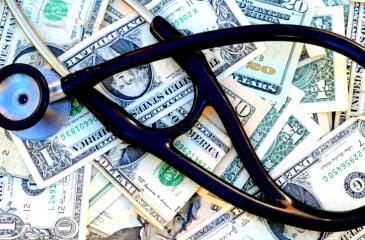By Carl Boccuti
The healthcare industry has been at the frontlines of the pandemic response, so it follows that they have been significantly impacted by COVID-19. Hospitals have seen a drop-off in profit margins due to the postponement of elective surgeries. Additionally, for many health systems, the reimbursement rates for COVID-19 treatment do not cover the cost incurred from providing that care. Add mounting PPE and sanitation expenses, and it has been an expensive few months for hospitals.
Many hospitals and healthcare providers are seeking solutions to bridge to the other side of this. It is likely that their recovery might take some time. Even as elective surgeries resume, they might not immediately get the patient flow they need as the public is still largely uncomfortable going to hospitals. To get through to the recovery, hospitals are looking to work with their financial institutions to find ways to preserve precious working capital.
Below are three alternative financing solutions.
(1) Sale and Leaseback of Existing Assets
One way to quickly generate liquidity is to sell equipment currently owned for cash and then lease the equipment back. Hospitals that previously purchased equipment with cash, or drew down on their existing revolvers, may be able to monetize that same equipment and recover the working capital. Everything from MRIs, CT Scanners, monitors, IT (hardware and software) and lab equipment could be eligible to be leased back. The lease will be paid back over the remaining useful life of the asset. With the current flattened yield curve and interest rates at historical lows, financing equipment is an attractive alternative to paying cash or using shorter term credit lines. Some prior purchased equipment may even qualify to be financed under a true lease structure where the Lessor receives the tax benefits of ownership and transfers those benefits, in the form of a lower implicit interest rate, to the hospital. This is an added benefit for not-for-profit hospitals who do not qualify for certain tax benefits.
(2) Tax-Exempt Leases
Most not-for-profit hospitals qualify for and should consider tax-exempt equipment leases. With a tax-exempt lease, the interest portion of the lease payment is exempt from federal taxes resulting in lower than market interest rates for the borrower. This type of financing is much simpler and quicker to close than a traditional bond and can be used as an efficient intermediate solution between larger, time consuming bonds. Lease terms typically range from 5 to 10 years. Additionally, the proceeds can be funded into an escrow account to lock in today’s low fixed interest rates. The equipment vendors would then get paid from the escrow account as the equipment gets delivered. Tax exempt leasing can be used to fund all types of essential use medical equipment, including electronic health technology. Since not for profit or 501 (c)(3) organizations cannot issue tax-exempt obligations themselves, a local Hospital Authority is typically utilized as a conduit for the financing.
(3) Master Lease Agreement
For new equipment purchases, hospitals can also consider setting up an equipment lease line of credit, utilizing a Master Lease Agreement. A Master Lease Agreement allows the hospital to preserve liquidity by financing 100% of the asset cost, including tax and other soft costs.
Each lease schedule will be priced at prevailing market rates, which are currently at historical lows. Master Lease Agreements allow the Lessor to pay vendors directly, offering a high level of flexibility and convenience. Subsequent equipment needs can easily be added to the Master Lease Agreement with simple lease schedules.
Additionally, true leases may also be available where the Lessor acts as the owner of the equipment and claims the tax depreciation benefits, which are then passed onto the hospital in the form of lower rates.
Any one or a combination of these three alternative financing solutions might be something to consider when trying to find ways to preserve working capital during this pandemic. As hospitals slowly begin to return to pre-COVID conditions, they should be consulting with their financial partners who can help them find efficient solutions to help bridge them through the rest of the pandemic period.
The Editorial Team at Healthcare Business Today is made up of skilled healthcare writers and experts, led by our managing editor, Daniel Casciato, who has over 25 years of experience in healthcare writing. Since 1998, we have produced compelling and informative content for numerous publications, establishing ourselves as a trusted resource for health and wellness information. We offer readers access to fresh health, medicine, science, and technology developments and the latest in patient news, emphasizing how these developments affect our lives.








